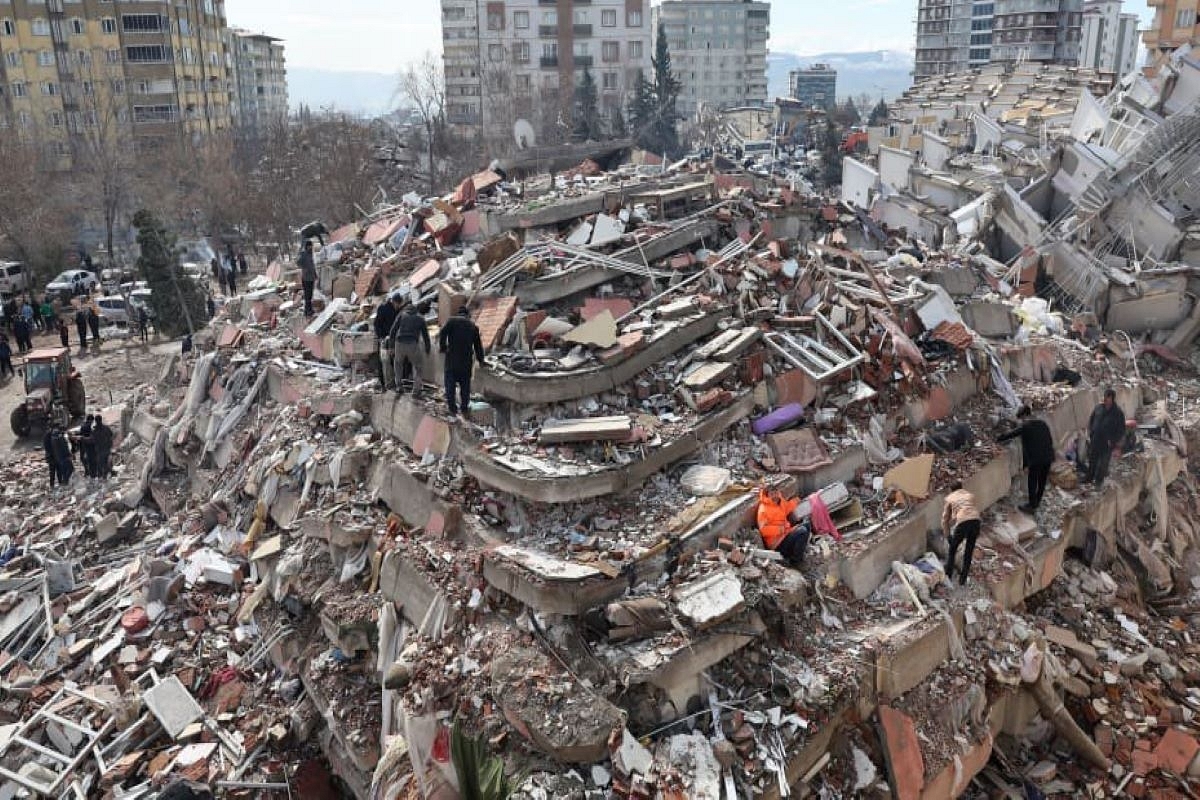Analysis
Turkey-Syria Earthquake Has Few Urgent Lessons For The Indian Government
- Given the scale of the construction in the last decade, the percentage and vulnerability have only increased, and there's a serious need for strict enforcement of building standards.

In Turkey, seismologists and engineers are now attributing a higher death count to the poor enforcement of building standards.
The unfortunate calamity in Turkey-Syria has resulted in more than 35,000 deaths.
One of the outcomes of the earthquake, in Turkey, has been a crackdown on dozens of developers for poor quality construction.
The prosecutors engaged in the investigation, have issued more than 110 arrest warrants, and identified over 130 people of interest.
In Turkey, seismologists and engineers are now attributing a higher death count to the poor enforcement of building standards.
As per reports, more than 1 million individual building units have suffered damages, after four earthquakes rocked the region inside twenty four hours. Investigators are expected to round up more people in the coming days.
Shimla, and the towns in its vicinity, burdened by the tourism in the region, have the same problem of building standards.
Mountains in the region are plagued with buildings on every turn with questionable building standards. Building units as high as six floors have come up on mountain slopes in Shimla, and that too when the state is in seismic zone four and five.
It would be unfair to narrow out Shimla as an outlier when it comes to unchecked construction in the Himalyan region, but the state capital is a testament to development gone rogue.
At the risk of sounding pessimistic, one has to admit that the city is one strong earthquake away from being reduced to nothingness.
The concerns were highlighted in a recent report. Of the 2.5 million structures the state of Himachal Pradesh counted in 2011, more than 95 per cent were not prepared to endure a strong earthquake.
Given the scale of the construction in the last decade, the percentage and vulnerability have only increased. At risk, are human lives.
It is not Himachal Pradesh or the Himalayan region that is vulnerable to the damage due to poor building standards. Time and again, residents of National Capital Region (NCR) have raised concerns about the poor quality of construction in the high rises.
In February last year, the roof in a high-rise collapsed in Gurugram, resulting in the death of two residents.
Across NCR, members of several federations have been demanding audits of the high-rises due to lack of information about the structural safety, and citing issues related to seepage, leakage, and plaster coming off.
Some residents have also cited concerns about longevity of the structures, given many building units were abandoned for years before construction was completed.
Perhaps, the calamity in the Turkey-Syria region should serve as an alarm bell for the Indian government, housed in a city that itself registers moderate earthquakes routinely and falls in seismic zone four.
For starters, how about a national rating scale for building standards and structural longevity, for all units with at least a single floor, renewed every ten years by the owner, society, or cooperatives?
Two, the centre, in collaboration with the state governments in seismic zones four and five must begin an audit of building units. The building units vulnerable to anything over a seven-pointer must be reported and proposed for redevelopment urgently, especially the ones in the Himalayan region.
Three, several areas of New Delhi are far more vulnerable to strong quakes, by virtue of their age. Some parts of the capital house buildings that date back to the final years of the Mughal era, and cometh the dark hour, these would be the first to fall.
A phase-wise redevelopment for old areas like Chandni Chowk, Karol Bagh, Sadar Bazaar and so forth. This is critical given emergency rescue teams would have also have a hard time reaching these areas, given the extremely narrow lanes and the unending maze of alleys.
Four, the government must work on imparting specific skills and infrastructure to the national disaster management teams that would be required in case of extensive damage.
This includes preparing for areas where access may be hindered by weather, debris, or geography. For instance, gradually, a the chopper fleet must be increased for the Himalayan region.
For the residents of North India, the memories of the 2005 October earthquake, with the epicenter in Pakistan, are quite fresh. The quake was one of the deadliest in South Asia, consuming more than 85,000 lives.
While one must hope for the best when it comes to earthquakes, there is no harm in preparing better for the worst.
Support Swarajya's 50 Ground Reports Project & Sponsor A Story
Every general election Swarajya does a 50 ground reports project.
Aimed only at serious readers and those who appreciate the nuances of political undercurrents, the project provides a sense of India's electoral landscape. As you know, these reports are produced after considerable investment of travel, time and effort on the ground.
This time too we've kicked off the project in style and have covered over 30 constituencies already. If you're someone who appreciates such work and have enjoyed our coverage please consider sponsoring a ground report for just Rs 2999 to Rs 19,999 - it goes a long way in helping us produce more quality reportage.
You can also back this project by becoming a subscriber for as little as Rs 999 - so do click on this links and choose a plan that suits you and back us.
Click below to contribute.
Latest